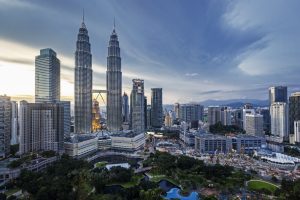When we think about countries and clean energy, it is useful to make a distinction between those that will not and those that cannot make the transition. Countries like Singapore have the political will to transition as well as the capital markets, technology, and governance structures to make it happen. Others, like Vietnam and Indonesia, may be ready to pivot toward clean energy but need help such as financing, technology and capacity-building to get there (that’s what the Just Energy Transition Partnership is, theoretically, supposed to do). Then there are countries like the United States, which could have transitioned toward clean energy at much greater scale a long time ago, but lacked the political will to do so until recently.
Countries that have large and influential fossil fuel lobbies or where the production and export of fossil fuels is a major part of the economy are less likely to have the political will for a clean energy transition. Malaysia is one such country, with a big oil and gas industry and a national champion, Petronas, that makes lots of money from fossil fuels and recycles much of it back into public coffers. So it is not surprising that by 2020, the share of renewable power like solar and hydroelectric in Malaysia’s energy mix was only 4 percent.
But Malaysia is now signaling it is ready and has the means to embrace clean energy in earnest and reduce emissions. Ministers are sending performative signals, announcing plans to cut back on air conditioning and switch from suits to batik in the office in a bid to increase energy efficiency. Such things are unlikely to move the needle in a meaningful way, but show at least a rhetorical commitment. More concrete plans for how Malaysia plans to accomplish its clean energy transition were unveiled in the National Energy Transition Roadmap, which was released in July.
The goal is to reach net zero emissions by 2050, with renewables making up 70 percent of the energy mix by that time. As of 2020, according to the Roadmap, the energy mix consisted of 42 percent natural gas, 27 percent oil, 26 percent coal, and 4 percent renewables. So there is a long way to go.
The plan envisions attracting up to 25 billion ringgit, more than $5 billion, for investment in clean energy. Specific initiatives include energy efficiency legislation, pilot projects aimed at improving conversion of biomass into energy, and designating Sarawak as a green hydrogen development hub.
There is also an energy security initiative being developed for Sabah that will focus on large-scale solar and small hydropower, biowaste and possibly geothermal. Malaysia’s main electric utility Tenaga Nasional Berhad (TNB) has been tasked with developing five solar parks across the country with 100 MW of generating capacity each, as well as 2,500 MW of floating solar at its existing hydropower dam reservoirs.
On the demand side, Malaysia is looking to increase uptake of electric vehicles by installing 10,000 charging stations throughout the country by 2025. Tesla’s recent entry into the Malaysian market should provide a further push for upgrading EV infrastructure and increasing uptake of electric vehicles. Petronas has committed to developing new types of biofuels and working on carbon capture technology.
A voluntary carbon market, the Bursa Carbon Exchange, became operational in March 2023 and is intended to complement these other efforts. Carbon trading is still new in Malaysia, so the exchange hasn’t made much of an impact yet. A cross-border renewable energy exchange is also in the works, which will theoretically allow Malaysia and its neighbors to leverage the efficiency of markets to better balance supply and demand.
As plans go, it’s a decent start. The real importance of this document is the signal it sends that Malaysia is getting serious about clean energy. Major actors like Petronas and TNB feature front and center, and it covers a comprehensive range of issues on both the demand and the supply side including energy efficiency, storage, renewable energy production, EVs and improvements to the regulatory and policy environment. But it remains just an outline, and much will depend on how the plan is implemented in the years ahead.
For instance, TNB is tasked in the plan with building around 3,000 MW of new solar capacity. This would be a significant increase over current levels, which are very low. But according to the Energy Commission’s statistical portal, in 2020 total installed generating capacity in Peninsular Malaysia was 27,370 MW. So an additional 3,000 MW of solar is a good start, but at that rate it will still be quite a long time before government workers can start cranking their air conditioners again.

































